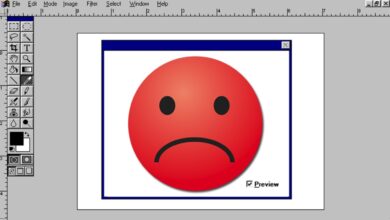Someone Please Save Us Photographers From All These Subscriptions

Photographers today face a troubling predicament – essential software like Adobe Creative Cloud can only be accessed through expensive subscriptions plans. The era of purchasing permanent software licenses has been replaced by never-ending monthly rental payments. While companies tout this as convenient and necessary, the reality is that recurring subscriptions disproportionately squeeze photographers while padding corporate profits.
As working artists, we value reliable tools, but not at the expense of fair pricing models. There are better solutions that could meet both photographers’ needs and software companies’ bottom lines, but the ever-powerful dollar continues to reign brutally over the industry. Change will require our collective industry demanding it, not quietly accepting the subscription status quo. Our creativity should not be constrained by compulsory rental fees.
If you’re a photographer today, you likely pay monthly or yearly subscriptions for your essential software like Adobe Creative Cloud. The subscription model has become pervasive in the photo/video world, with companies like Adobe and now Camera Bits (makers of Photo Mechanic), and others offering their software for recurring fees rather than a one-time purchase. But while subscriptions offer certain conveniences, they are ultimately bad for photographers, financially restrictive, and a greedy ploy by software companies.
Firstly, the subscription-based pricing of major photo/video editing suites like Adobe CC and Capture One is designed to squeeze photographers for recurring revenue. Instead of paying once for software at a fair price, now you must pay a monthly “rental” fee forever, with no end in sight. Adobe CC plans start around $10/month and easily balloon to $50-60/month for professional packages. For software you could once buy permanently for a few hundred bucks, you’ll now be locked into endless payments.
This subscription model is extremely profitable for software companies (don’t forget Adobe’s record revenues after their subscription switch), but financially burdensome for working photographers, especially for freelancers, part-timers, or small studios operating on tight margins. What if you had a slower work month? Too bad, Adobe still collects their 60 bucks from you for software access. Considering Photoshop used to cost $600+ once and was yours permanently, today’s endless subscription fees provide terrible value. Someone paying for the full Creative Suite will eclipse that former one-time fee in less than a year.
Proponents of subscriptions argue it allows photographers access to always updated software. But photographers don’t necessarily want or need constant major updates. In fact, many creatives abhor it. There was recently a minor stir in the music world because an interview with Paul McCartney showed a notably old Apple computer on his desk. Why would someone with almost limitless funds stick with that? Because it works. Creatives need to be able to trust their gear, and if it’s handling everything they need it to, upgrading is a needless risk. Minor updates and bug fixes could easily be released without switching to subscriptions. The only reason companies push the subscription model so hard is that recurring payments maximize their profit. Don’t be fooled otherwise.
Additionally, if you ever decide to end your photography subscription, you lose access to the software entirely. This creates major problems. Photographers typically have years of edited images saved in proprietary formats like PSD. If you end your Photoshop/Lightroom subscription, you may lose access to edit those master files. You’re then forced to keep paying Adobe forever just to access your own work! Subscriptions force loyalty and impose nasty consequences if you want to stop payments and leave. You shouldn’t be penalized for deciding a company’s software no longer meets your needs.
Another issue with subscriptions is the constant pressure to upgrade plans for added features. Companies know photographers rely on a variety of tools, so they segment important features across plans. Want animation tools? 3D rendering? Advanced panoramic stitching? Be prepared to upgrade to a more expensive plan. Before, you could buy a full-featured software version with everything you need for photography. Now, features are arbitrarily restricted to push users into more expensive subscriptions.
Again, this subscription structure is designed purely to extract maximum fees from photographers. It holds necessary features hostage unless you upgrade. And the most advanced professional tools will likely require paying even pricier rates long-term. Why should photographers be nickeled and dimed for critical software functionality?
Many argue the switch to subscriptions was necessary to fund constant software updates and cloud features. However, the pace of meaningful updates has barely increased during the subscription era. The switch was not to improve the software but to lock in recurring payments.
Thankfully, there are alternatives for photographers who reject this endless rental model. One option is seeking out software that still allows a perpetual license purchase. Affinity Photo and Affinity Designer are two one-time purchases with no subscriptions, and as an Affinity user, I can attest that it’s really good. Similarly, Capture One Pro offers a single purchase option, albeit at a steep $300 price.
Another avenue is sticking with older software versions that you already own outright. Just because Adobe releases the latest Photoshop doesn’t make your current version obsolete. Work on that license you own indefinitely. Companies want you to feel left behind on old software to force upgrading, but stand your ground. Older Photoshop/Lightroom versions have everything most photographers need without rental payments.
Open-source creative software has also come a long way in recent years. Tools like GIMP, Darktable, and Krita offer free alternatives to subscriptions for editing and post-processing. Support their development and avoid sending cash to corporations. While not every open-source tool is ready to replace the major players yet, the options are improving constantly and worth exploring.
The problem is this predatory subscription model is unlikely to change until it impacts the bottom line of software companies. Adobe and other vendors will continue forcibly shifting users to subscriptions as long as photographers pay up. They have zero incentive to offer fair buying options when people comply with expensive rentals. For any real change to emerge, photographers must protest with their wallets.
To be clear, I don’t think we’ll ever walk it back entirely from this new subscription-based landscape, but the point is that many photographers have options. Embrace open-source tools created by communities, not corporations. Seek out apps with fair one-time pricing. And when all else fails, stubbornly continue using older purchased software you own indefinitely. In particular, if you’re a hobbyist, ask yourself if you really need to shell out several hundred dollars a year. Take a weekend to explore open-source and one-time purchase options.
Beyond just photography software, this subscription trend has infected all kinds of industries, from streaming media to smart appliances. Consumers are increasingly forced into a “rental economy” where we make endless payments to maintain access and functionality. Corporations love this, because passive income from subscriptions is reliable and massively profitable. But for consumers already dealing with economic uncertainty, forcing more subscriptions is tone-deaf and will eventually incite pushback. Everything from your music library to your car’s heated seats get locked behind recurring fees. And make no mistake, until consumers push back to the point it becomes unprofitable, subscriptions will continue to infiltrate more and more areas. That’s the only reason BMW rethought those heated seats.
In the case of creative software, though, many photographers and artists still have agency. Many well-known tools remain entrenched in the industry, but not unbeatable. Realistically speaking, I think that the record profits seen from subscriptions show that collective action to reverse the tide might not be possible, at least at the moment, but you, the individual, should make an informed decision about your budget and needs without blindly accepting that monthly rate.
The next time you see that charge on your credit card, maybe take a few hours to look at what other options are out there and how much you could save. And that doesn’t just go for photography software. As streaming service prices skyrocket, maybe check out your local library (they often have free streaming platforms as well). Paying for a monthly video game pass? How many games do you really play? Maybe buy one or two at a time, then recoup your costs by selling them when you’re done. We, as consumers, have been gradually lulled into this subscription-based economy, and it’s time we wake up and re-evaluate how much of it we really need.




